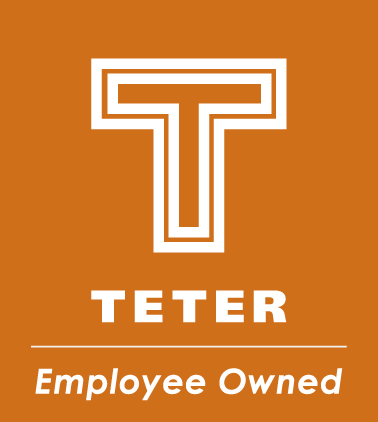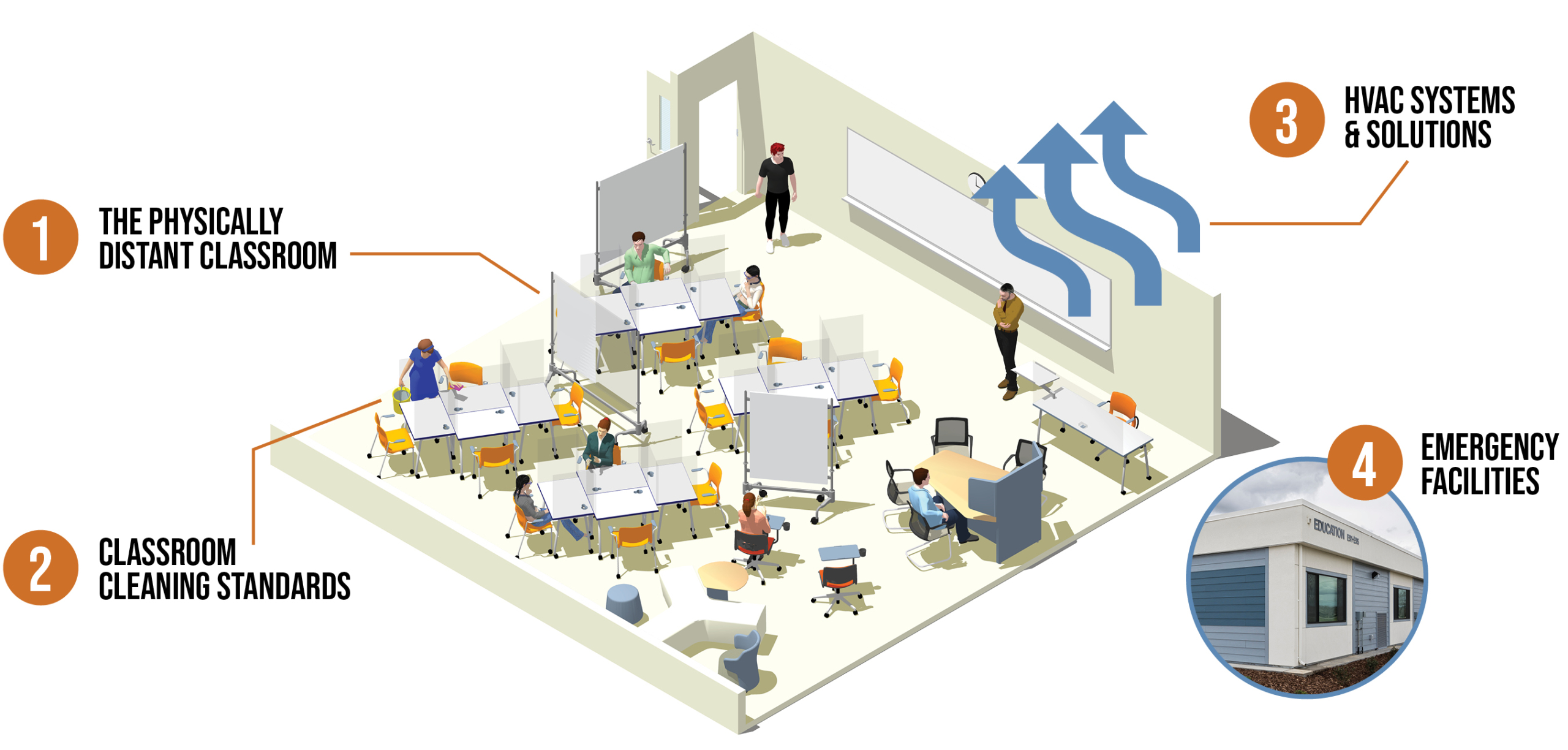 THE PHYSICALLY DISTANT CLASSROOM
THE PHYSICALLY DISTANT CLASSROOM
No two schools are alike, so establishing a District philosophy can help you to examine your approach to returning to the classroom.
We can help you communicate best practices using signage — indicating maximum occupancies, hygiene reminders, and single-directional paths of travel — and help you plan for the future by identifying possibilities for alternative classroom spaces, such as shade structures or the repurposing of existing community spaces.
 CLASSROOM CLEANING STANDARDS
CLASSROOM CLEANING STANDARDS
In addition to customary cleaning procedures, using District approved disinfectants to wipe down all surfaces including tabletops, desks, sinks, drinking fountains, and other flat surfaces from the floor up to 72” can assist in maintaining wellness. Soft surfaces should be misted with disinfectant and allowed to air dry before use.
It may become necessary to remove furniture and other items to mitigate exposure, reduce cleaning time, and to maintain required distancing. What storage facilities do you have at your disposal and will it be enough? We’re ready to help you space plan, identify, and procure options to meet a variety of needs.
 HVAC SYSTEMS & SOLUTIONS
HVAC SYSTEMS & SOLUTIONS
TETER’s integrated A&E team are here to help you understand best practices for running your HVAC systems. Although HVAC system strategies cannot prevent transmission, they can greatly mitigate the risk of spread by reducing the overall concentration of the virus.
The best HVAC system to combat COVID-19 is a system that allows flexibility and adjustments in its ability to purge, humidify, and filter the air. Most systems on school campuses do not have these capabilities. The most immediate improvements to consider include ensuring that minimum flow rates achieve 6 air changes per hour. Switch to using Merv-13 filters if fan horsepower allows. If such filters cannot be accommodated, then maximize outside air.
 EMERGENCY FACILITIES
EMERGENCY FACILITIES
As a District, have you determined where you will temporarily house students if they are or become ill? The good news is that you have options. Our education and healthcare architectural teams have determined several solutions to temporarily isolate students from one another until their parents can pick them up from your campus. Some of these DSA approved options include temporary buildings (relocatables), modifications to existing buildings, and the addition of permanent buildings or structures. We would be glad to explore your options with you!
Whether you have a plan and need help implementing it, or you are working to figure out where to start, we encourage you to call us. We’re here for you, ready to continue building a better valley.



